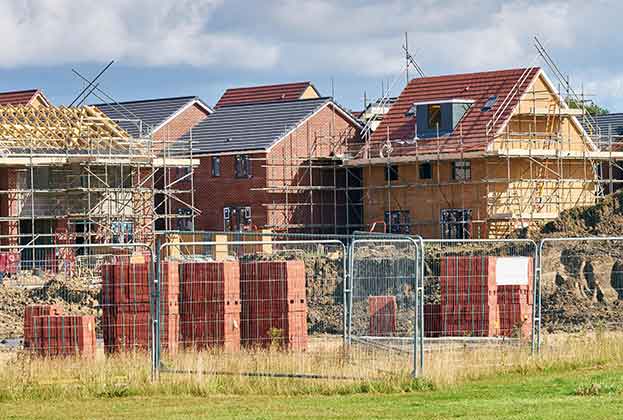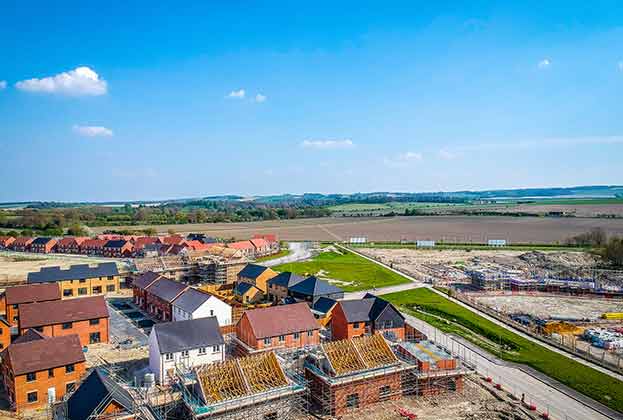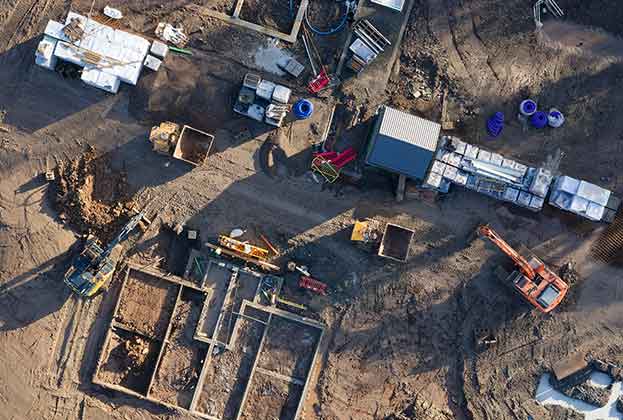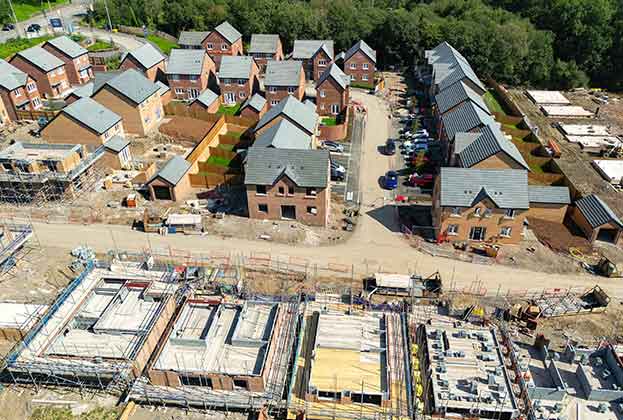If nothing else, 2020 was a year of change. The Oxford English Dictionary expanded its annual Word of the Year to encompass several ‘words of an unprecedented year’ which included ‘Covid-19’, ‘furlough’ and ‘moonshot.’ There were also a number of words and phrases which took on increased prominence in planning over an eventful 12 months.
1. Planning White Paper
Consultation on the Planning White Paper presented proposals intended to be a once in a generation reform of the planning system. There was strong emphasis on building beautiful and sustainable development and improving the delivery of housing in response to the shortfall in supply across the country.
Savills Research indicates that only 60 per cent of LPAs in England passed the 2020 Housing Delivery Test and it was unclear in the White Paper how the Government intends to factor constraints into the proposed housing figures or deal with cross-boundary apportionment of housing numbers where an LPA is unable to meet its own housing need.
The emphasis on housing in the White Paper meant a noticeable absence of recognition for other forms of development needed to ensure a strong, green, economic recovery. ‘Growth’, ‘renewal’ and ‘protected’ areas were introduced to clarify where development is located, with a digital-first planning system intended to support the reforms.
The Infrastructure Levy was proposed to address the same objectives as CIL and S106 while seeking to reflect market conditions, with attendant concerns regarding its complexity. It remains to be seen whether such a radical reform as set out in the White Paper will have the intended effect of a streamlined service delivering beautiful development, without consequent delays in application and plan decision-making.
2. Zonal
Hinted at in the Planning White Paper, zonal planning provides a regulatory system which sets out what development would be allowed based on specific predefined rules/laws. One of the key features of the planning system in England is the use of discretionary development control for planning applications and permissions, very different from where zoning plans are used as the principal means to control development.
he introduction of ‘growth’, ‘renewal’ and ‘protected’ areas with associated levels of predetermined planning permission in local plan documents would represent a significant change to the current system and we eagerly await the outcomes of the White Paper consultation.
3. Digitisation
More than simply converting information from a physical format into a digital one, digitising planning became a priority for planners and government over 2020 in an effort to streamline the planning process and make it more accessible.
The Covid-19 pandemic increased uptake of virtual platforms in an unprecedented manner and highlighted the importance of digital accessibility to assist with plan-making and decision-taking.
4. Algorithm
Applied to the planning process, the negative connotations associated with exam result algorithms in 2020 carried into assessment of the standard method for calculating housing need and discussion in the House of Commons.
The algorithm used to propose Standard Method 2 incorporated affordability and saw an increase in the required number of houses to be provided in the South East. Local MPs partly blamed the blanket nature of the calculation for the misallocation of where housing should be delivered.
5. Planning’s new normal
Social distancing, limited contacts, face masks… as our everyday lives changed due to Covid-19, working from home, limited site visits and virtual meetings have all become the ‘new normal’ for planning and planners. Planning committees and inquiries have been conducted virtually for the first time and consultation events also went virtual, in digitised exhibition spaces and conference calls.
2020 also saw an increased appreciation of local space and facilities, reduction in commuting and desire for home working space and gardens – all important factors in the design and consideration of proposed development.
6. Class E
Significant changes were made to Permitted Development Rights and the Use Class Order in 2020, including the new Class E – bringing commercial, business and services uses into one use class in an attempt to provide flexibility and aid growth and sustainability of town centres. A subsequent consultation (closing this month), proposing the change of use from Class E to residential use under permitted development would increase the implications of this combined class still further.
7. First Homes
First Homes is another new 2020 scheme that aims reduce the barriers to home ownership, with the Government response to consultation published at the same time as the Planning White Paper.
First Homes is intended to improve access to home ownership for the middle-income households currently using Help to Buy, but while Help to Buy has dedicated funding, First Homes will be funded by the developer contributions that would otherwise provide traditional affordable housing.
First Homes therefore needs to be paired with more affordable housing grant funding to prevent access to housing for the most disadvantaged households falling. Savills research indicates that the ability to deliver First Homes that are affordable will be limited across significant parts of the country.
8. Building Better, Building Beautiful
The Building Better, Building Beautiful Commission was established in 2019 to promote and increase the use of high-quality design for new build homes and neighbourhoods. A key feature of the Planning White Paper, the emphasis on building beautiful, sustainable development in 2020 was roundly welcomed in the consideration of design codes and design champions. Concern remains, however, about how a fast track to beauty is compatible with achieving truly sustainable development.
9. Stranded assets
The concept of stranded assets was introduced to highlight the implications of assets no longer being economically viable as a result of changes associated with transition to a low-carbon economy. The importance of net zero carbon development only increased in importance over 2020, and with the built environment a significant contributor to carbon emissions and the emphasis from the Government on efficient use of existing buildings and brownfield land to deliver housing and growth, stranded assets must be a key consideration in the planning process in the move towards net zero.
10. Nutrient neutrality
The issue of nutrient neutrality has had a significant impact on the delivery of new homes in the Solent for a number of years, and in 2020 it has become increasingly prominent across the country as excessive levels of phosphorous and nitrogen found in wastewater from housing and agriculture has led to eutrophication and algal blooms.
Natural England has introduced a ‘nutrient calculator’ to assist local authorities and developers in delivering nutrient neutral development and a priority in 2021 must be a strategic approach to mitigation in order to unlock development.




.jpg)


.jpg)

.jpg)
